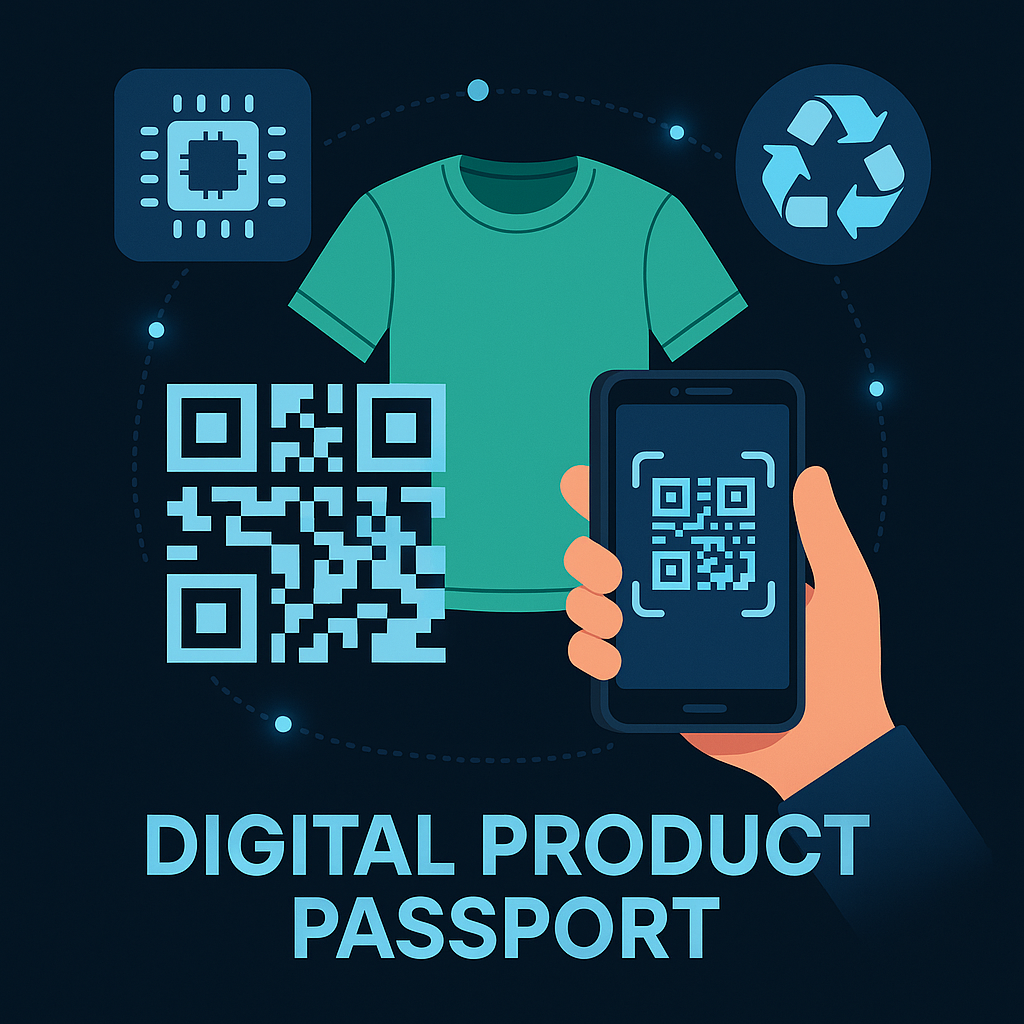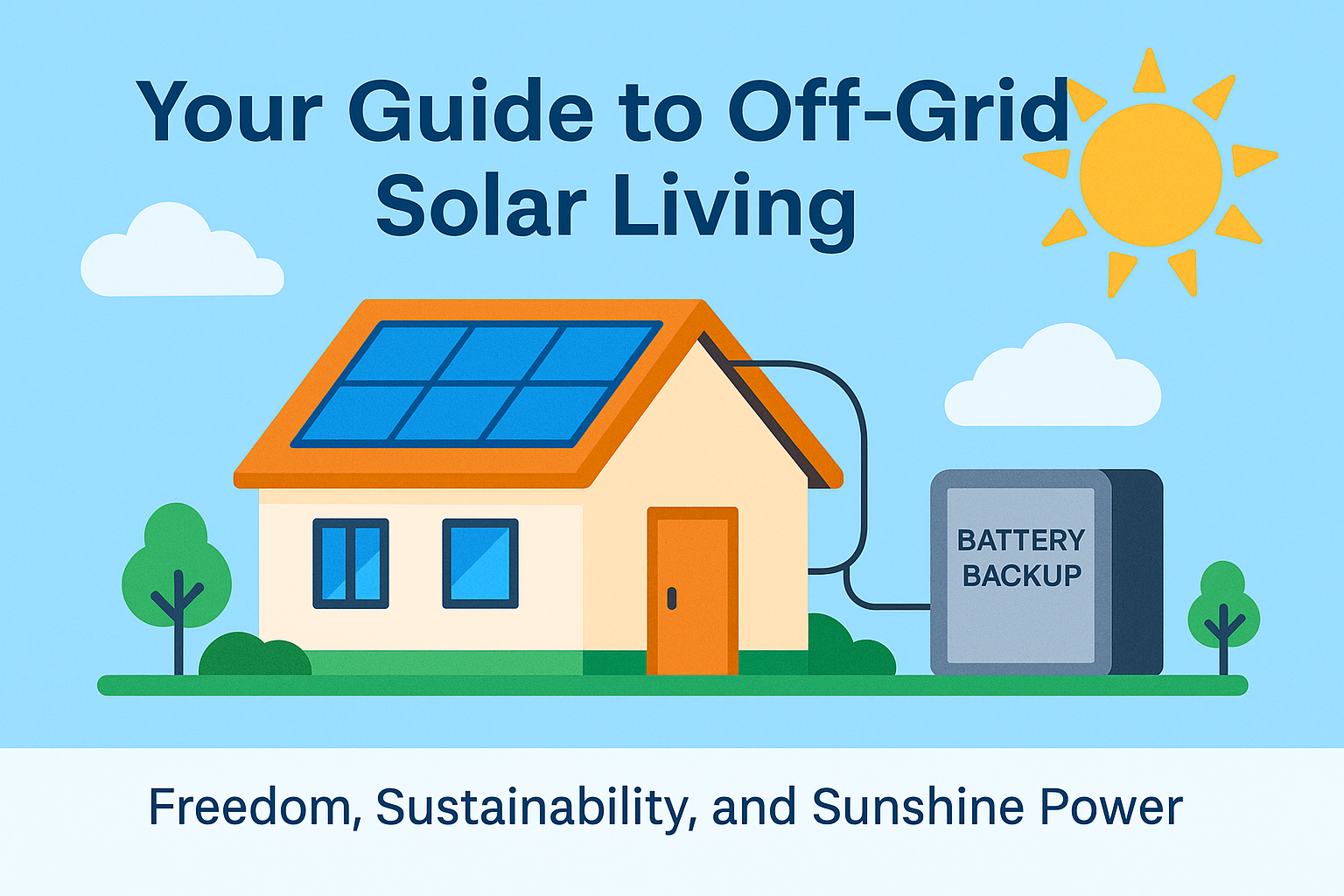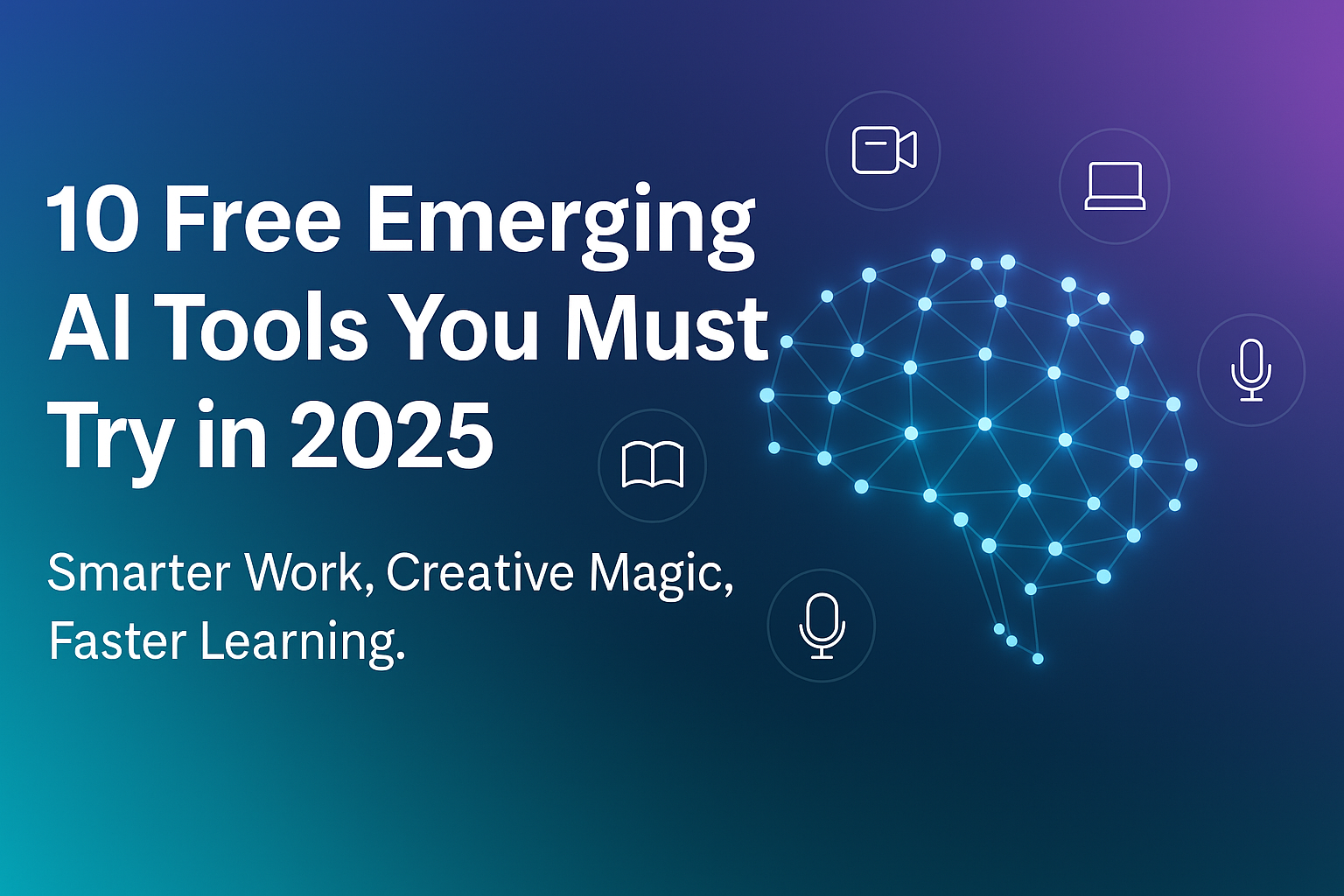Your cart is currently empty!
Category: Tech Info

Pasport Produk Digital: Masa Depan Ketelusan dan Kelestarian Produk
Adakah anda pernah terfikir tentang asal-usul produk yang anda beli?
Dari mana ia datang, bagaimana ia dibuat, dan adakah ia mesra alam?
Kini, jawapannya boleh ditemui dengan mudah melalui Pasport Produk Digital (Digital Product Passport, DPP)!Dalam artikel ini, saya akan kongsikan tentang apa itu Pasport Produk Digital, bagaimana ia digunakan dalam teknologi terkini, kelebihannya, cabaran yang dihadapi, dan contoh syarikat yang telah memulakannya.
Apa Itu Pasport Produk Digital?
Pasport Produk Digital ialah rekod digital lengkap yang mengandungi segala maklumat tentang sesuatu produk – dari bahan mentah, proses pengeluaran, hingga kepada jejak karbon dan cara kitar semulanya.
Bayangkan produk anda ada ‘kad pengenalan digital’ yang boleh diakses melalui telefon pintar hanya dengan mengimbas kod QR atau menggunakan NFC!Di Eropah, penggunaan Pasport Produk Digital akan diwajibkan bermula tahun 2027 melalui undang-undang Eco-design for Sustainable Products Regulation (ESPR).
Bagaimana Teknologi Membantu Pasport Produk Digital?
Teknologi moden memainkan peranan penting dalam membangunkan DPP. Antaranya:
- Tag RFID dan NFC — Untuk menghubungkan produk fizikal kepada rekod digital.
- Kod QR — Mudah diimbas oleh pengguna untuk dapatkan maklumat produk.
- Blockchain — Menjamin keselamatan dan keaslian maklumat produk.
- Internet of Things (IoT) — Membolehkan data dikemas kini secara masa nyata.
- Awan dan PIM (Product Information Management) — Menyimpan maklumat produk secara sistematik.
Semua ini menjadikan DPP lebih daripada sekadar maklumat statik — ia hidup, berubah, dan boleh diakses di mana-mana!
Syarikat Mana Yang Sudah Gunakan Pasport Produk Digital?
Beberapa syarikat besar telah mula melaksanakan konsep ini:
- BMW — Setiap kenderaan mempunyai identiti digital unik untuk pengesahan dan servis.
- H&M — Pakaian dengan kod QR yang memaparkan asal bahan dan panduan kitar semula.
- Decathlon — Menggunakan tag RFID untuk menjejak perjalanan produk dari kilang ke kedai.
- Nespresso — Membolehkan pengguna menjejak asal usul biji kopi melalui kod QR.
Ini membuktikan bahawa DPP bukan sekadar teori, ia sedang dilaksanakan dalam industri sebenar!
Kelebihan Pasport Produk Digital
Mengapa syarikat berlumba-lumba menggunakan DPP?
- Ketelusan kepada pengguna — Kita tahu dari mana produk datang dan bagaimana ia dibuat.
- Sokongan kelestarian — Membantu produk dikitar semula atau digunakan semula dengan lebih mudah.
- Pematuhan undang-undang — Memenuhi keperluan peraturan baru seperti ESPR EU.
- Meningkatkan kepercayaan — Membanteras pemalsuan produk dan mempertingkatkan keyakinan pengguna.
- Memudahkan servis dan jaminan — Data lengkap membantu proses pembaikan atau penggantian produk.
Cabaran yang Perlu Diatasi
Namun begitu, membangunkan dan melaksanakan DPP bukanlah mudah:
- Kos tinggi — Melibatkan pelaburan dalam teknologi dan latihan staf.
- Pengurusan data kompleks — Perlu mengumpulkan maklumat dari banyak pihak.
- Isu keselamatan data — Risiko kebocoran maklumat sensitif perlu ditangani dengan serius.
- Kurangnya kesedaran pengguna — Perlukan masa untuk mendidik pengguna tentang kelebihan DPP.
Trend Masa Depan
Dalam masa terdekat, lebih banyak produk dari sektor tekstil, elektronik, bateri EV, pembinaan, dan bahan kimia akan diwajibkan memiliki Pasport Produk Digital.
Teknologi seperti blockchain dan AI dijangka semakin banyak digunakan untuk memastikan DPP lebih kukuh dan pintar.Satu hari nanti, mungkin setiap barang di rumah kita akan mempunyai pasport digital tersendiri!
Kesimpulan
Pasport Produk Digital membawa dunia menuju ke arah ekonomi pekeliling yang lebih bertanggungjawab, telus, dan lestari.
Sebagai pengguna, kita akan lebih bijak membuat pilihan. Sebagai peniaga, kita boleh membina kepercayaan pelanggan.
Ini bukan lagi masa depan — ia sudah bermula sekarang!Adakah anda bersedia menyambut era Pasport Produk Digital?

How Off-Grid Solar Power Systems Work (And What You Need to Know)
Have you ever dreamed of cutting ties with the power company and running your home entirely on solar energy? That’s exactly what off-grid solar systems let you do! Instead of pulling electricity from the utility grid, you generate and store all your own power — perfect for remote cabins, rural homes, or anyone looking for energy independence.
Here’s a simple breakdown of how it works:
The Basics: How Energy Flows
An off-grid setup has a few main parts:Solar Panels – Capture sunlight and turn it into DC electricity.
Charge Controller – Protects your batteries from overcharging.Battery Bank – Stores the energy for when the sun isn’t shining (like at night or on cloudy days).
Inverter – Converts the stored DC energy into AC electricity (the kind your appliances use).Some setups even include a backup generator just in case you hit a long stretch of bad weather.
How Big Does Your System Need to Be?
The average home uses around 20–30 kWh per day, so you’ll need a solar array sized to keep up. For many homes, that means installing about 7–10 kW worth of panels — or roughly 18–28 solar panels, depending on their wattage.You’ll also want a battery setup that can store at least 1–2 days’ worth of electricity — think 20–40 kWh of storage — so you’re covered even when the sun hides.In sunnier places, you might get away with fewer panels and smaller batteries, but in cloudier climates, you’ll need to size up to stay comfortable.
Choosing Your Batteries: Tesla Powerwall and Friends
When it comes to battery storage, you’ve got options:
Tesla Powerwall 3 – 13.5 kWh per unit, sleek design, powerful, and built-in inverter. Reliable but pricey (around $10,000 each).
EcoFlow DELTA Pro – Super flexible and expandable, great if you want something modular (and portable), but you might need several units for a whole house.Bluetti AC300/AC500 series – Good for modular setups too, especially if you want a system you can grow over time.
Most off-grid homes today use lithium iron phosphate (LiFePO₄) batteries — they’re tough, maintenance-free, and can last for 10+ years!
Costs: What Should You Expect?
Going fully off-grid isn’t cheap. A full home system (solar panels + batteries + inverter) can cost $30,000 to $70,000 or more, depending on your needs
.You can save a little by doing it yourself (DIY), but off-grid installs are tricky — you’re dealing with big, heavy batteries and serious wiring. Plus, DIY installs often void equipment warranties.
The good news? In the U.S., the 30% federal solar tax credit can help make it more affordable!
Climate Matters: Customize for Where You Live
Your location makes a big difference:
Sunny areas (like the Southwest) need fewer panels.
Cloudy or snowy areas (like the Pacific Northwest) might need bigger arrays and extra battery storage.
Hot places can slightly reduce panel efficiency, so high-temp-rated panels help.Windy or coastal areas need heavy-duty mounts and corrosion-resistant gear.
Long story short: build your system to match your local weather and sun exposure.
Maintenance: What to Expect
Off-grid solar systems are mostly low-maintenance, but you’ll need to:
Check and clean your panels once in a while (rain usually does most of the work).
Inspect wiring and mounts after big storms.
Monitor battery health — especially if you’re using older-style lead-acid batteries (modern lithium batteries are basically set-it-and-forget-it).
In Conclusion:
Going off-grid with solar can give you incredible freedom — no electric bills, no blackouts, just pure sunshine powering your life. It’s an investment upfront, but with the right planning and equipment, it can be a rewarding (and eco-friendly) way to live.
Thinking about making the leap? Start by sizing your daily energy needs and exploring battery options — your solar-powered future might be closer than you think!

10 Free Emerging AI Tools You Should Try in 2025
(You’ve probably never heard of most of these)
Discover new AI tools for smarter work, creativity, and learning — all free and globally available.
Introduction
In 2025, AI isn’t just for tech giants and coders — it’s becoming a free, everyday tool for creators, students, entrepreneurs, and dreamers.
While everyone talks about ChatGPT or Midjourney, a new wave of free, global AI tools is quietly changing the game.Here are 10 emerging AI tools you probably haven’t heard of — but should definitely try.
1. Granola — AI Meeting Notes Without Bots
If you’re tired of clunky meeting bots, Granola is a breath of fresh air.
It transcribes your Zoom, Teams, and Meet calls locally on your Mac, expanding quick bullet points into detailed summaries — no bots, no privacy concerns.
→ Visit Granola2. ElevenLabs — Text-to-Sound Effects
You know ElevenLabs for voice cloning. Now, imagine typing “stormy night” and instantly generating a full audio file.
Their new SFX tool lets creators generate sound effects purely from text prompts.
→ Try ElevenLabs SFX3. Pika — Video Editing with Just Text
Ever wanted to drop a spaceship into your video clip?
Pika uses AI to edit, enhance, and even insert new objects into videos based on simple prompts.
→ Explore Pika4. Doctrina AI — Your AI Study Partner
Perfect for students, Doctrina can create quizzes, notes, essays, and summaries — across different languages — using just your input.
Study smarter, not harder.
→ Learn with Doctrina5. Optimo — Instant Content Calendars
Marketing a brand? Running a blog? Optimo generates a full editorial calendar from a single keyword, helping you save time on planning content.
→ Use Optimo Free6. Gamma — Beautiful AI Presentations Instantly
No design skills? No problem. Gamma turns your ideas into beautifully designed presentations, documents, or websites — ready to share.
→ Build with Gamma7. Merlin AI — ChatGPT for Any Webpage
Highlight any text online and press Ctrl+M — Merlin brings GPT-4, Claude, and more to wherever you are on the web.
It’s like having a pocket AI assistant 24/7.
→ Install Merlin8. Krea — AI for Image, Video, and 3D Creators
Krea isn’t just an AI image generator — it’s a full creative suite for generating art, animations, and 3D content.
A must-try for digital creators.
→ Try Krea9. Elicit — Smarter Research, Faster
Instead of manually sifting through papers, use Elicit.
It finds, summarizes, and organizes academic research — perfect for students, researchers, and writers who need real insights, fast.
→ Research with Elicit10. Gemini Code Assist — Google’s Free AI Developer Tool
Google’s Gemini Code Assist brings AI code generation, debugging, and PR reviews right inside your favorite IDE — free for developers.
No subscription needed.
→ Check out Gemini Code AssistFinal Thoughts
The AI world isn’t slowing down — it’s getting smarter, friendlier, and free-er every day.
If you’re curious, creative, or just want a shortcut for your work and life, these tools are a great place to start.Which AI tool are you going to try first?
Drop a comment below — I’d love to hear!